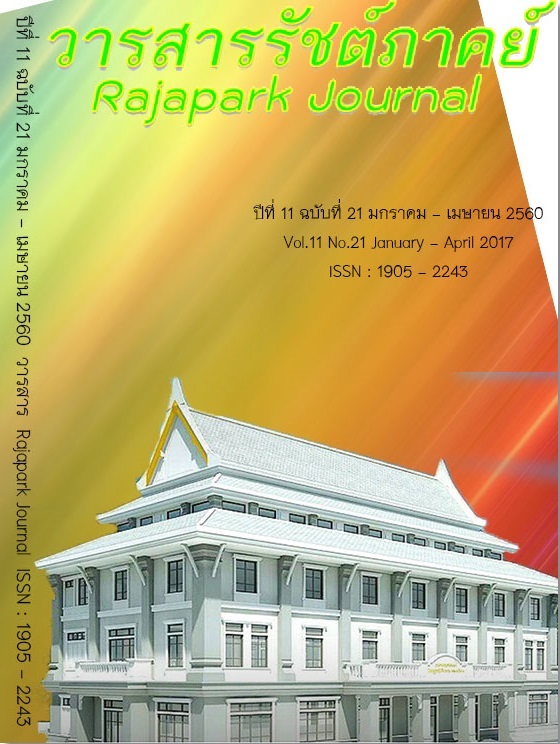The Development model of the management community justice
Main Article Content
Abstract
This research is qualitative research and quantitative research. The purpose of this research, (1) to study the model of the management community justice and (2) to develop guidelines for the management community justice. The research sample group consists of 25 the experts with knowledge, skills and experience in the social sciences, law, political science, public administration or the administration of local government and 291 Chief Administrator of local government. The questionnaire used to collect data was the third round, 25 the experts created by Delphi Technique and the study of independent variable is personal information and the management community justice include; empowerment, protection and immunity from criminal problems and offense, restoration, conflict resolution and get offenders back into the community and the dependent variable is the development model of the management community justice include; involvement model, partnership model, mobilization model and intermediary model. The research were used in data analysis were percentage, mean, standard deviation and median and interquartile range to find answers to a questionnaire from the No. 2 and 3. Results (1) Personal information that the majority are male, 64.95%, the majority of aged 46 - 50 years, 36.43%, the highest bachelor/or equivalent degree, 69.07%, the most of a monthly income of 50,001 – 60,000 baht, 37.11% and the most of governor age 11-15 years, 26.46%. (2)The development model of the management community justice, overall are the high level (x¯ = 4.07, S.D. = 0.53), considering that aspect; the involvement model is high and the highest average (x¯ = 4.13, S.D. = 0.54), followed; the partnership model (x¯ = 4.11, S.D. = 0.55), the mobilization model (x¯ = 4.07, S.D. = 0.52) and the intermediary model (x¯ = 3.96, S.D. = 0.51), respectively. (3) The management community justice, overall are the high level (x¯ = 4.11, S.D. = 0.53), considering that aspect; the restoration is high and the highest average (x¯ = 4.20, S.D. = 0.52), followed; protection and immunity from criminal problems and offense (x¯ = 4.15, S.D. = 0.55), conflict resolution (x¯ = 4.13, S.D. = 0.52), empowerment (x¯ = .10, S.D. = 0.53 and get offenders back into the community (x¯ = 3.98, S.D. = 0.52), respectively.
Article Details
Views and opinions appearing in the Journal it is the responsibility of the author of the article, and does not constitute the view and responsibility of the editorial team.


